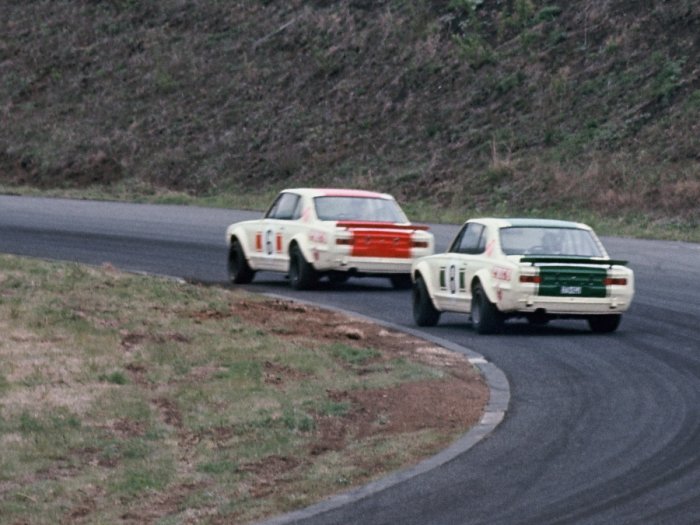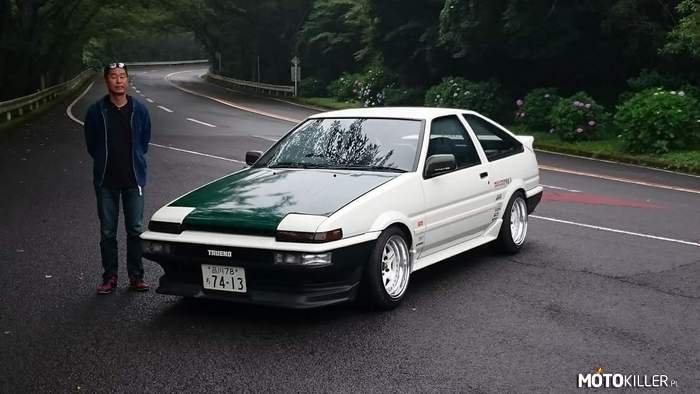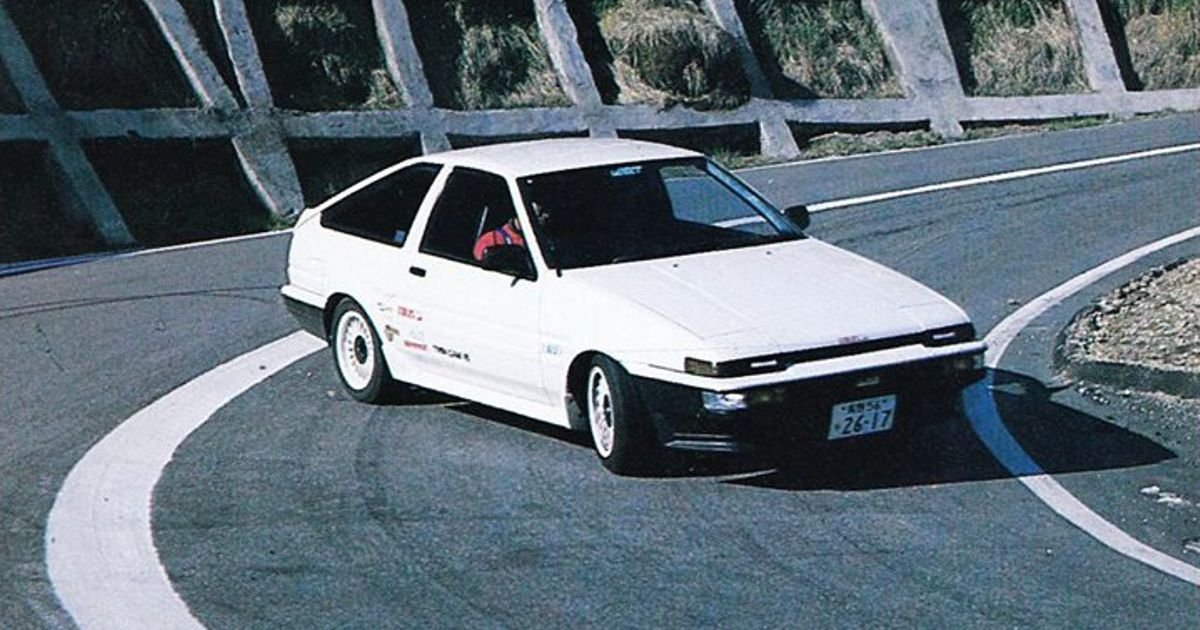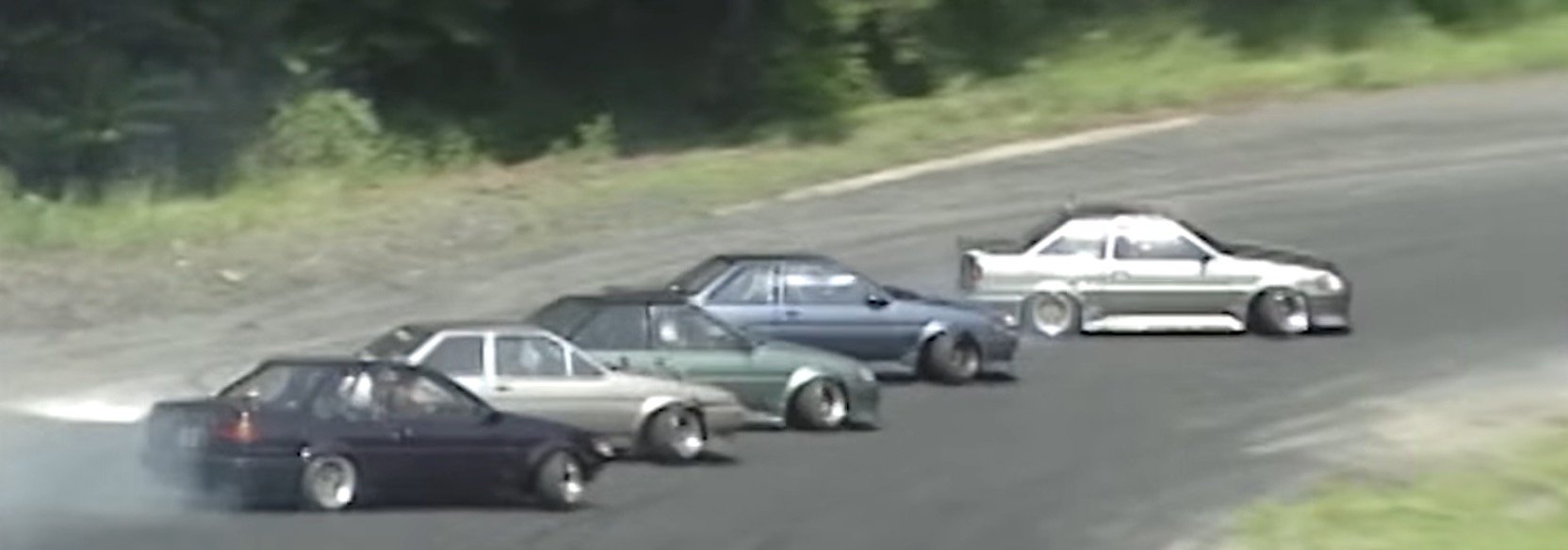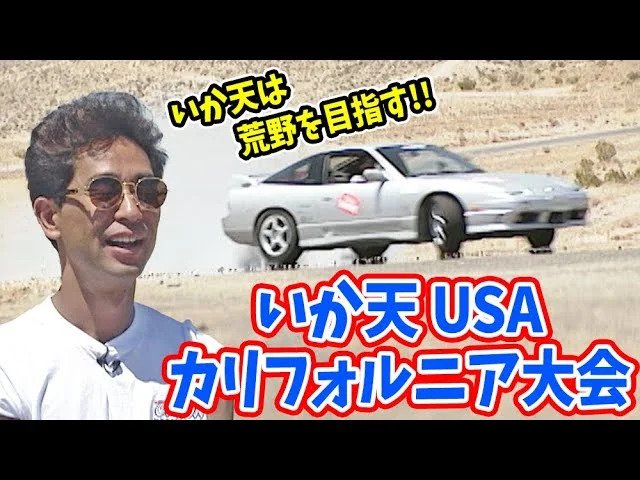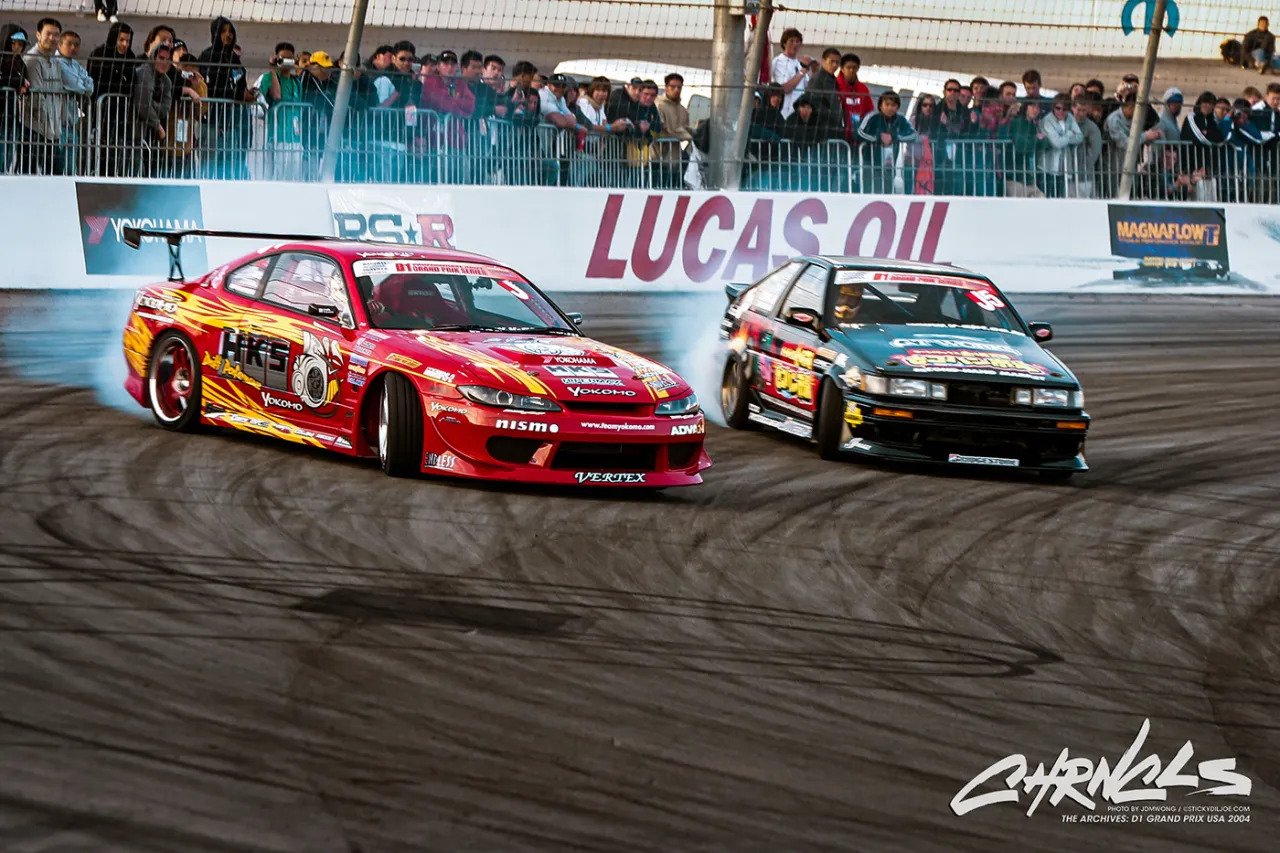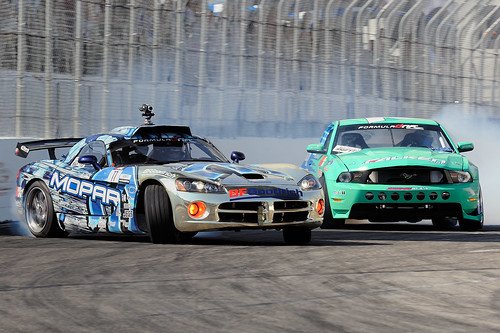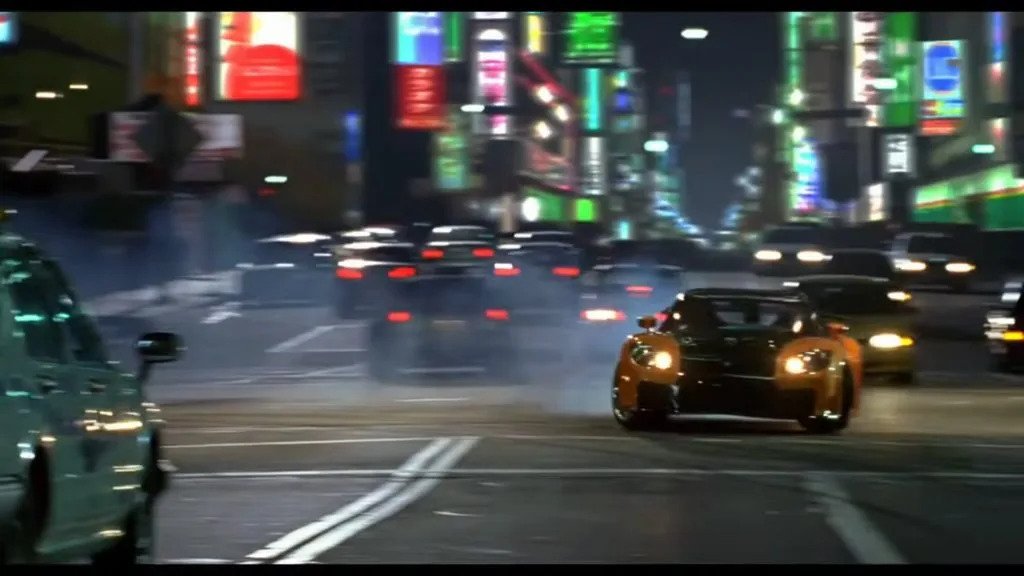The Art of the Slide: Drifting - PT 1
By Taylor Shinobu Williams
From its early days in Japan, to media like Tokyo Drift, Initial D and videogames, along with its now massive presence on social media, drifting has become a worldwide phenomenon, storming the hearts and minds of everybody. It is the fastest growing motorsport in the world, reaching all corners, if there are cars, there is now drifting.
What is drifting?
It is the only motorsport in the world where it’s not about being the fastest, it’s purely about style, who can look best while sideways.
“It’s the only way to make your car look cool, while making a lot of noise, but still going slow enough to where you can actually see the car.” - T2
Drifting is the art of having a controlled oversteer slide with a car. You effectively break the rear of the car loose, only breaking traction with the rear tires. Then continuing to keep the car sideways throughout the whole turn.
To the average person it looks like out of control chaos, losing control of your vehicle with no ability to recover. But drivers maintain control of the car the whole time, pushing the car and tires to the absolute, and sometimes past, limit. It takes focus, determination and nerves of steel, plus a machine that can handle the abuse it is being given.
Sideways History
Drifting started in Japan in the 1970s by Kunimitsu Takahashi, who used it to quickly get around racetracks in the Japan Touring Car Championship. His techniques inspired street racers to use it to get around the turns of the togue (mountain roads) quicker, but slowly evolved into a fully style based type of driving. Kunimitsu Takahashi is largely considered to be the father of drifting.
Via Japanese Nostalgic Car
It evolved throughout the 1980-90s being brought into different aspects of motorsport, and most famously being showcased by Keiichi Tsuchiya, throughout professional racing. Keiichi Tsuchiya was a seasoned racing driver, with a Le Mans class win, but had a special interest in drifting. Keiichi had seen the techniques used by Kunimitsu Takahashi, and wanted to duplicate in it his driving, which helped him gain national attention in Japan.
Via motokiller
With drifting growing fast, multiple media outlets wanted to showcase drifting, so together with Keiichi, they created a video in 1987 called “Pulpsy,” which was the first time drifting had been showcased in such a way. It gained international attention and inspired a lot of enthusiasts to start drifting. Keiichi rightfully earned the title of “Drift King.”
Via Pulpsy
One of the media outlets was Option Magazine, a Japanese car magazine founded by Daijiro Inada in 1981. He was captivated by drifting and convinced it would become the next fascination in motorsport. In 1988, together with Keiichi, Daijiro started the first ever series of events specifically for drifting, called Ikaten. Ikaten, was the second sanctioned event and first chance most enthusiasts would get to showcase and practice their drifting in a safe and legal manner. There had been one single event done by the magazine Carboy previously, but this was the first series of events.
Via video option
Drifting had continued to grow in popularity throughout Japan and even the world, due in part to Option Magazine and even a VHS series called Video Option, which would showcase these Itaken events. Media from Japan started to make its way overseas, specifically to the USA, where enthusiasts started to become enthralled with what they were seeing at their local Japanese imports store. Option and Daijiro Inada took note of this popularity, and subsequently in 1996 they decided to host the first drift event in the USA, Option Ikaten at Willow Springs Raceway in California. Option brought three people along, Kenji Okazaki (a NHRA funny car driver sponsored by Mooneyes), Ken Nomura (a top level D1GP driver), and the drift king himself, Keiichi Tsuchiya to instruct and help judge a competition and a Nissan 180sx (a popular drift platform) to give demonstrations in.
With the growing popularity of drifting, and drivers becoming increasingly more skilled, Daijiro and Keiichi noticed a lack of events for the highest, and possibly professional skill level. So in 2001, they founded the D1 Grand Prix (or D1GP,) the first ever professional drifting league. This was the first chance for the top 1% of drivers to showcase their skills and compete, which bred some of the most legendary drifters.
Around the same time drifting had started to become popular in the US. More and more people had started to fall in love with drifting, with events like Drift Day popping up, with the earliest drift teams in the US like Slide Squad, Battleswing, Club4AG, Sileightymania and Drifting Pretty in attendance. These were the first real drift events available to US drivers, where they could hone their skills and show off as well.
In 2003, the landmark USA drift event happened, when D1GP hosted an Exhibition event at Irwindale Raceway in California. It was the first time drifting on a professional and large scale had been brought to the US. Companies and drivers from Japan had shipped their specially built cars over, and even a few American drivers got the chance to compete. It brought drifting more into the limelight in the US, with more than 9,000 people in attendance.
Via stickydiljoe.com
D1GP hosted a couple more events in the US, but didn’t want to bring a series over fully. Many US companies took note of this, especially Ryan Sage and Jim Liaw of Global Slipstream Media. They worked to create America’s first professional drifting body, one to span the country and give everyone looking to push themselves and a chance to compete, so in 2004, the inaugural season of Formula D was held. Many major companies saw this as an opportunity to market themselves in the new motorsports. Ford campaigned their brand new S197 Mustang, Pontiac with the new GTO and even Dodge with the Viper.
Via Motor Trend Group
Outside of competition drifting grew, being featured in Need for Speed: Underground, the anime “Initial D” and media outside of automotive starting to mention it, but most famously, with the 3rd Fast and Furious movie: Tokyo Drift. This movie changed everything about drifting, it changed the public’s perception of drifting, the car style, the technique, and even how movies were made. It featured some incredible looking cars that stayed very true to the style, and even some real life drift cars. Not to mention, some actual drifters as background and stunt drivers. People like the drift king himself, Keiichi Tsuchiya, pro drivers Ken Gushi, Rhys Millen, and Nadine Hsu, and even one of the people credited with bringing drifting to America, Toshi Hayama (the “what's up Tosh” line Bow Wow says.)
Drifting has been around for quite awhile now but remains to be one of the youngest forms of motorsport. Pro drifting has been around for close to 25 years, with many different international sanctioning bodies having their own series. Along with that, there are many smaller grass roots events, like Final Bout and Super D that hold on to the classic roots of drifting. Even with drifting’s pop culture influence, being featured in basically everything at this point, makes it a worldwide phenomenon. But that’s not all! In Pt. 2, we will get deeper into pop culture around drifting, drift cars and how to drift.


